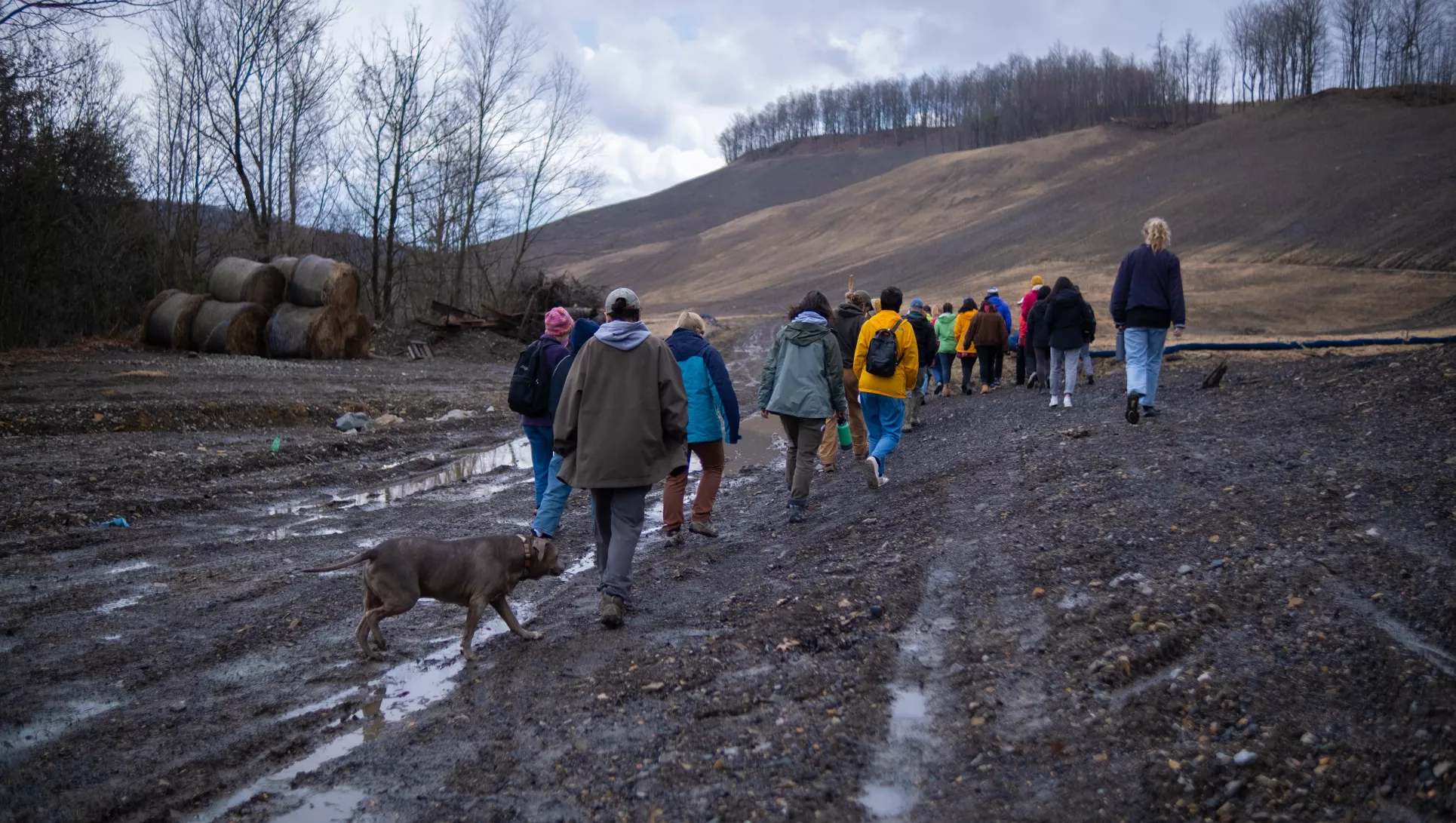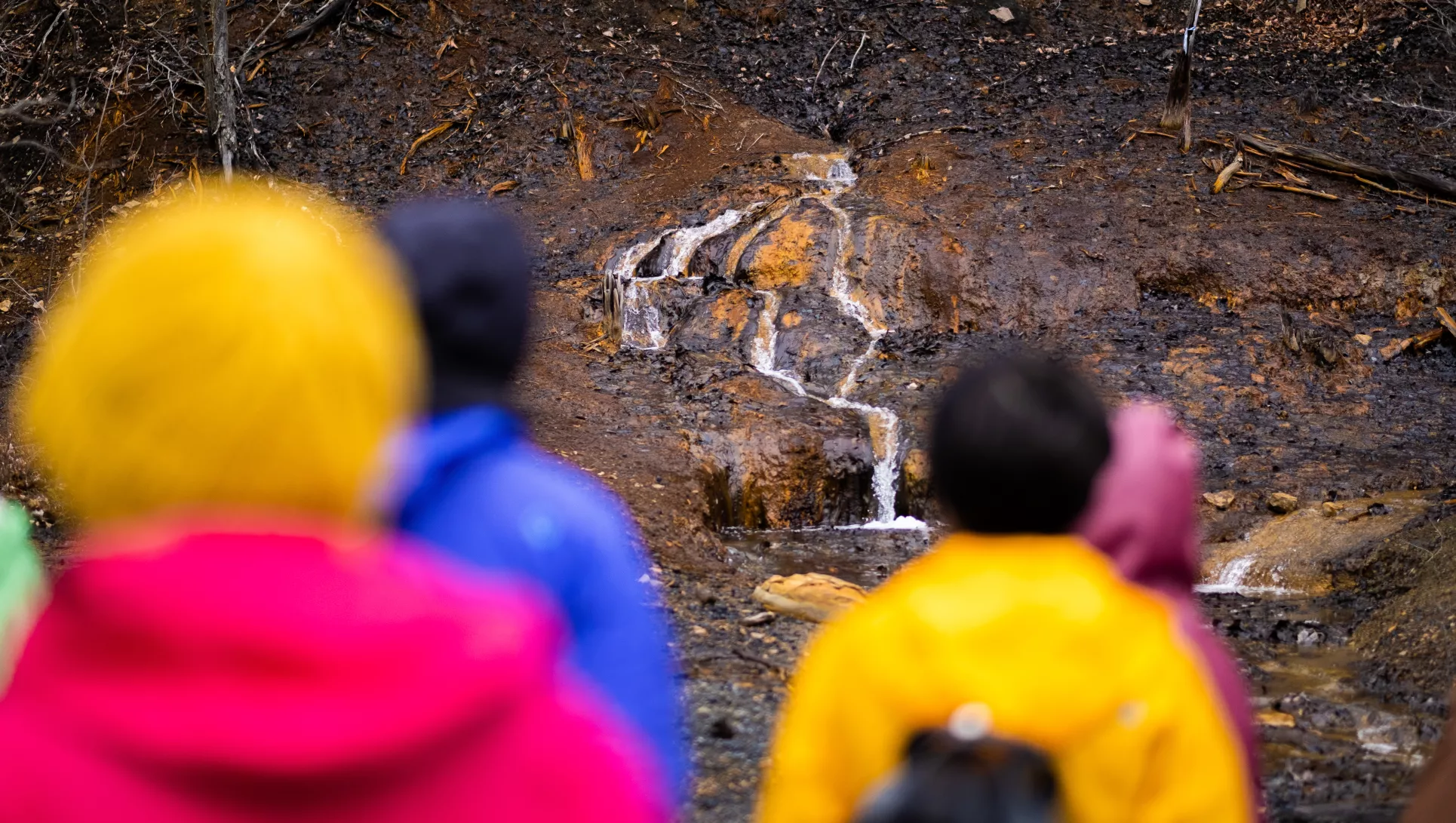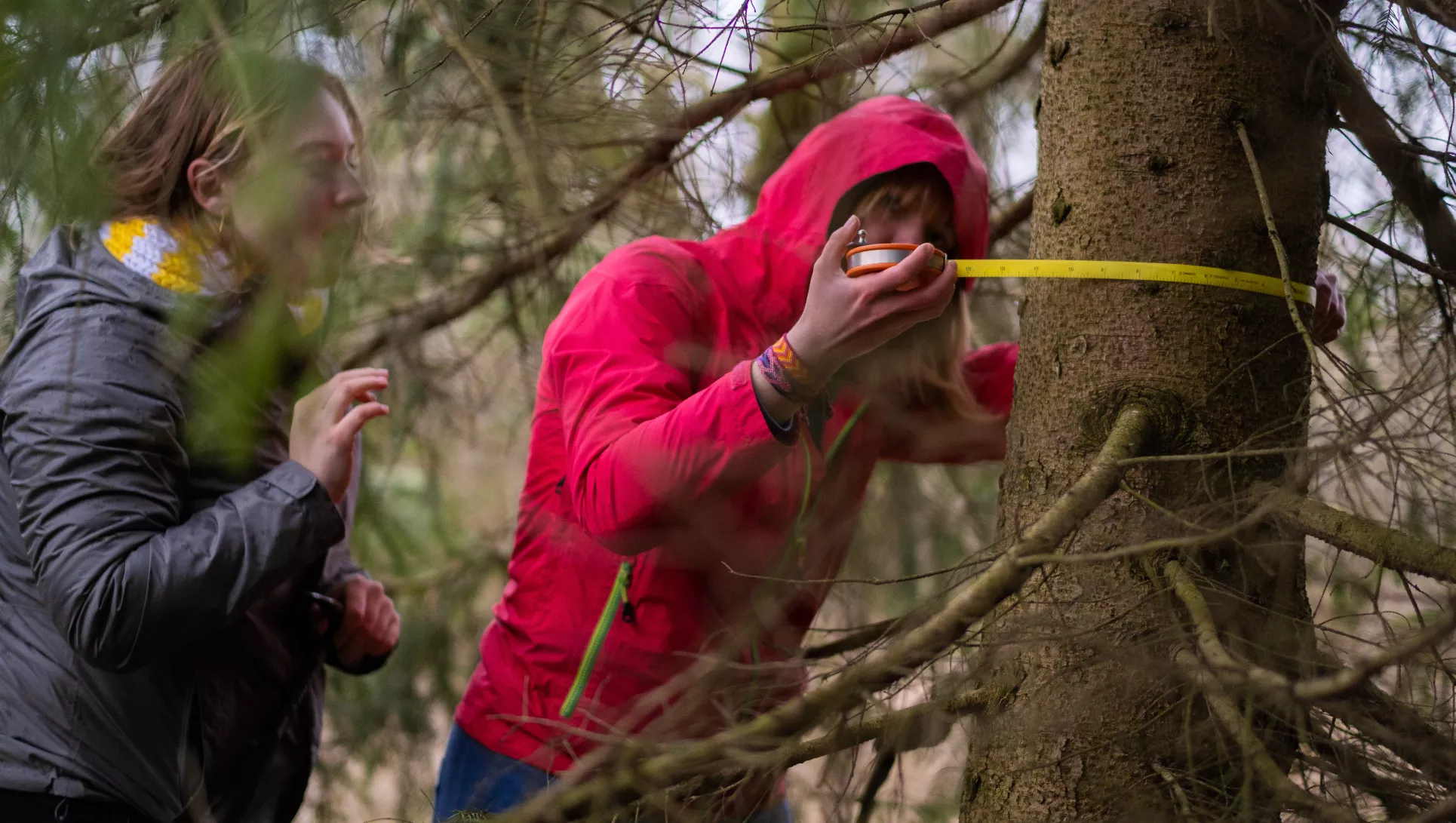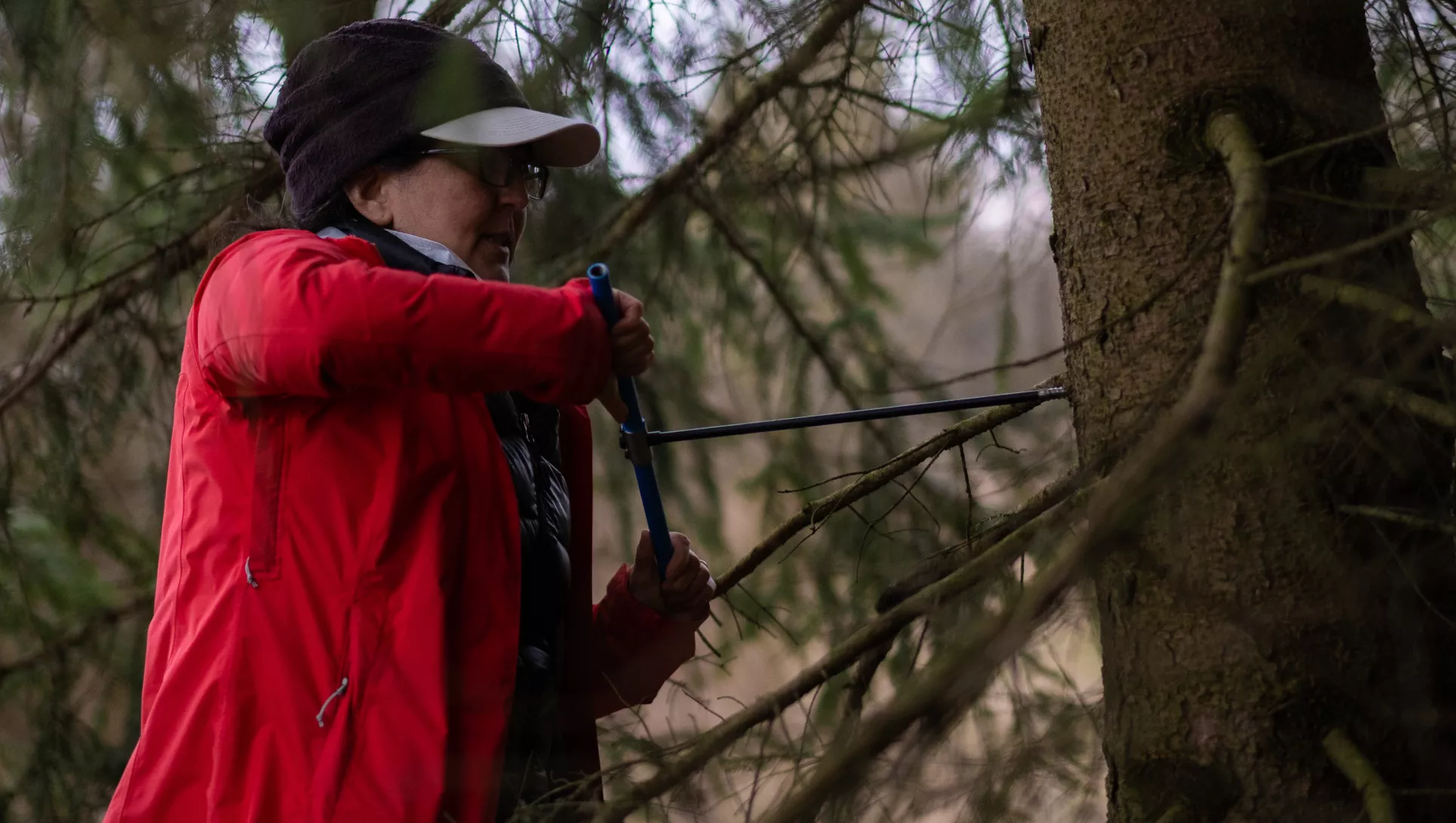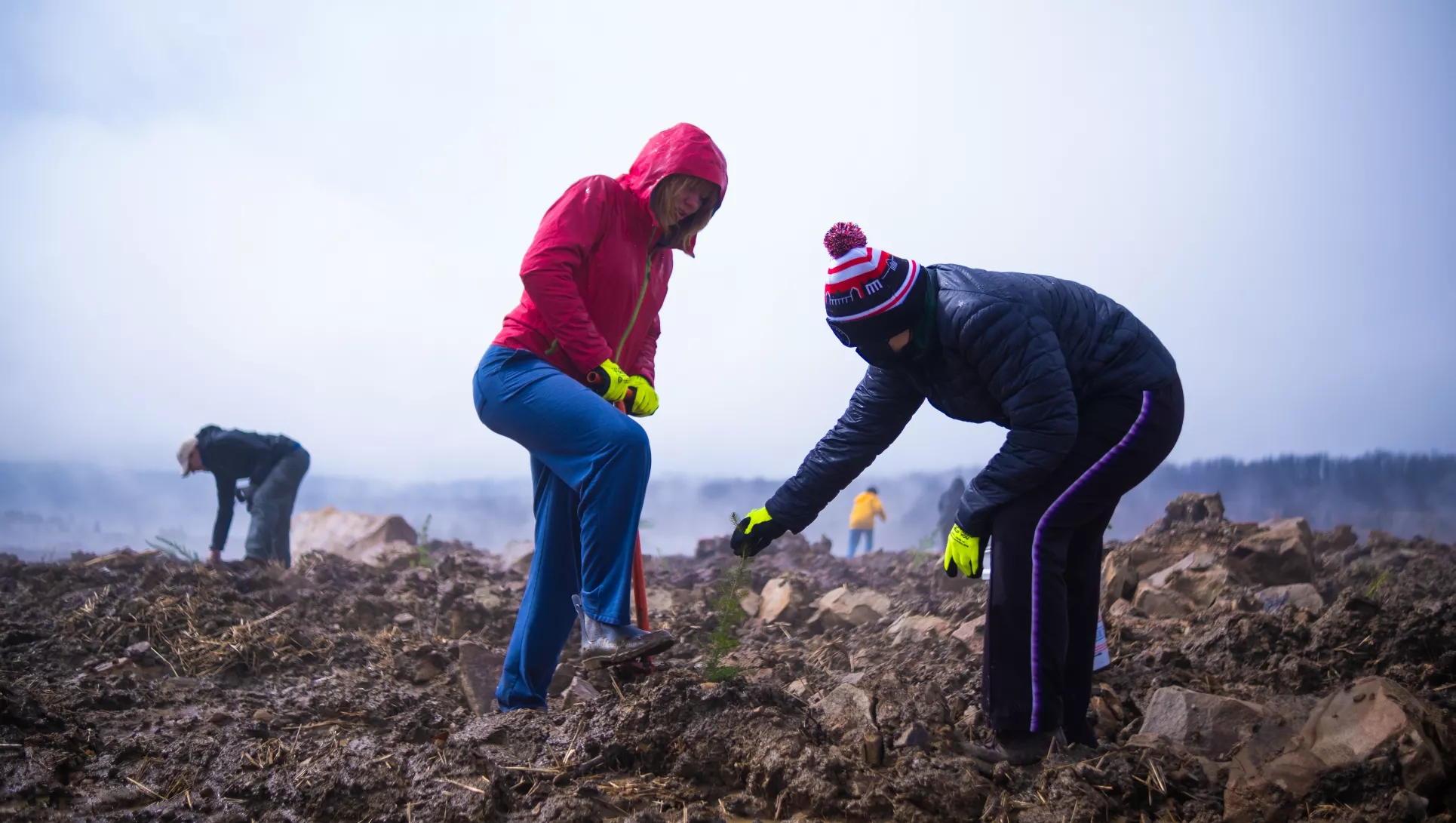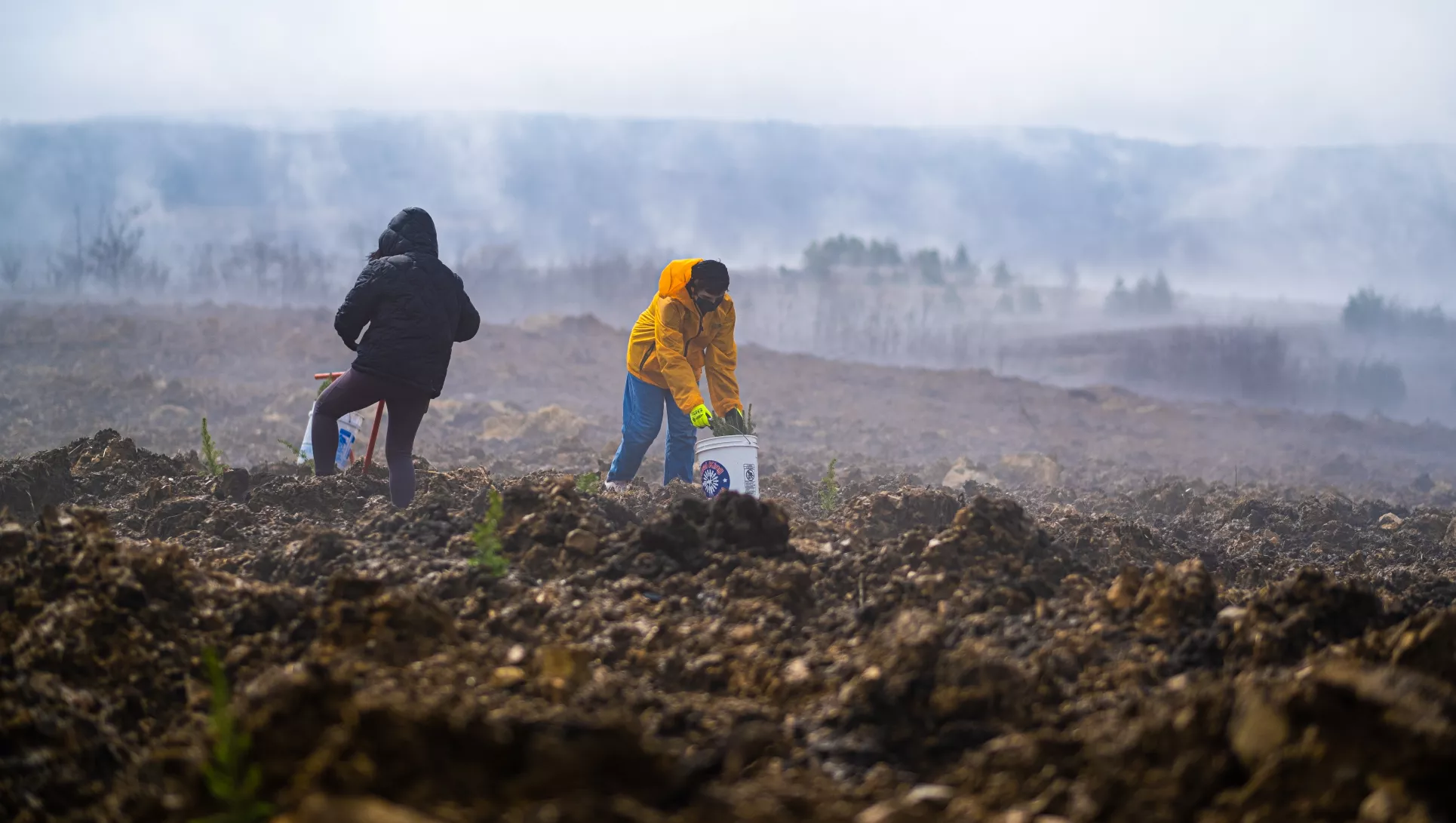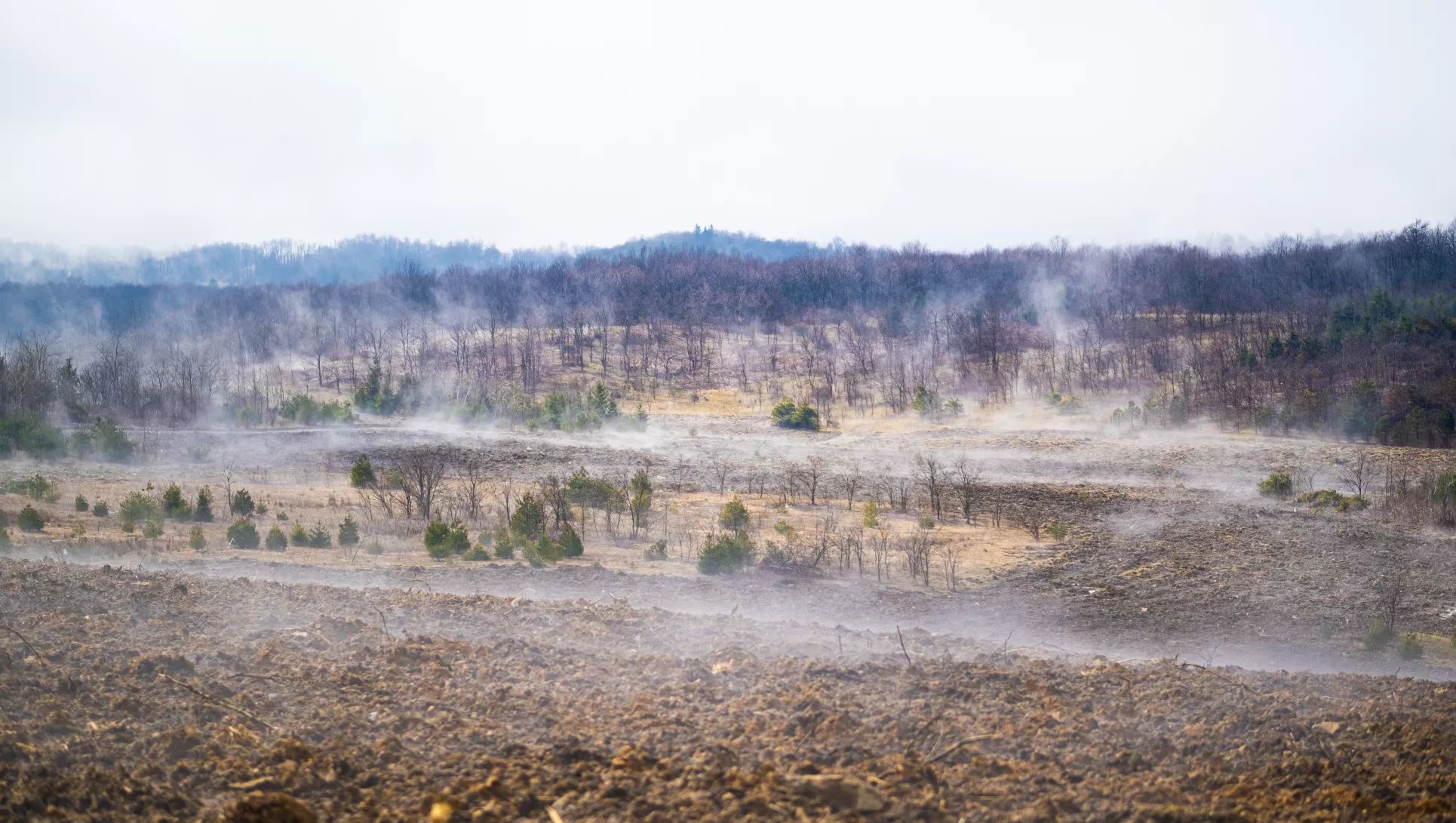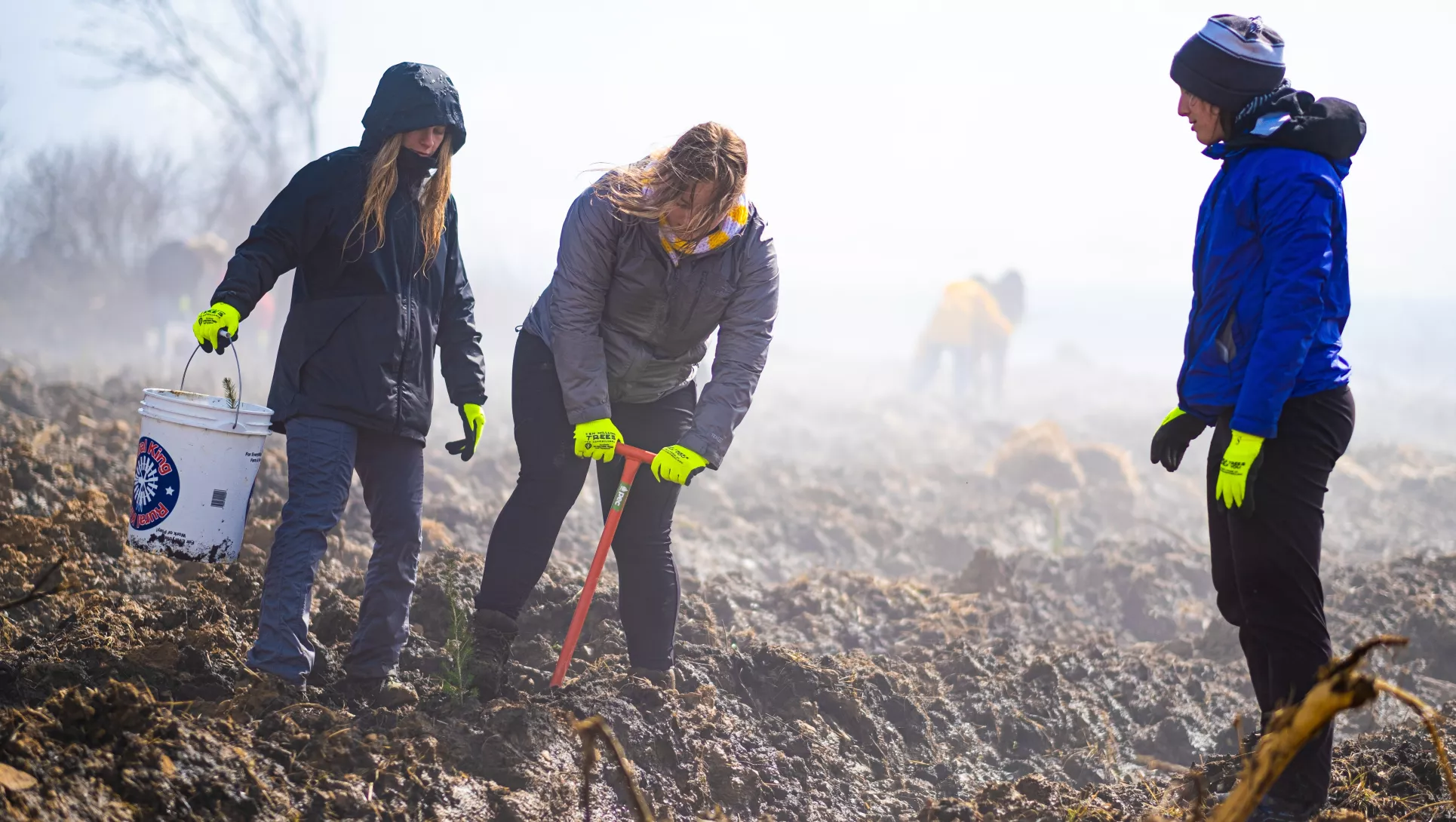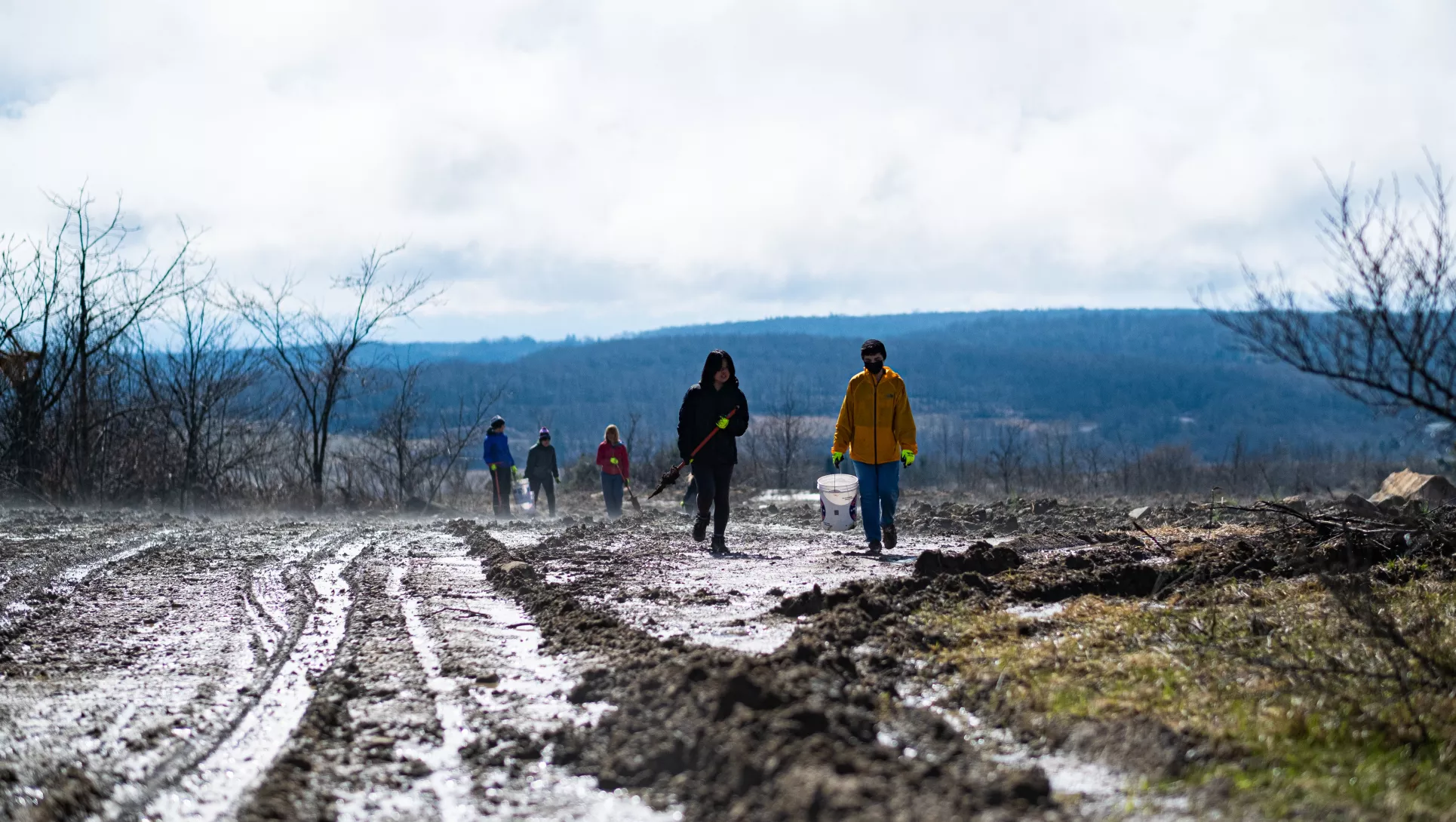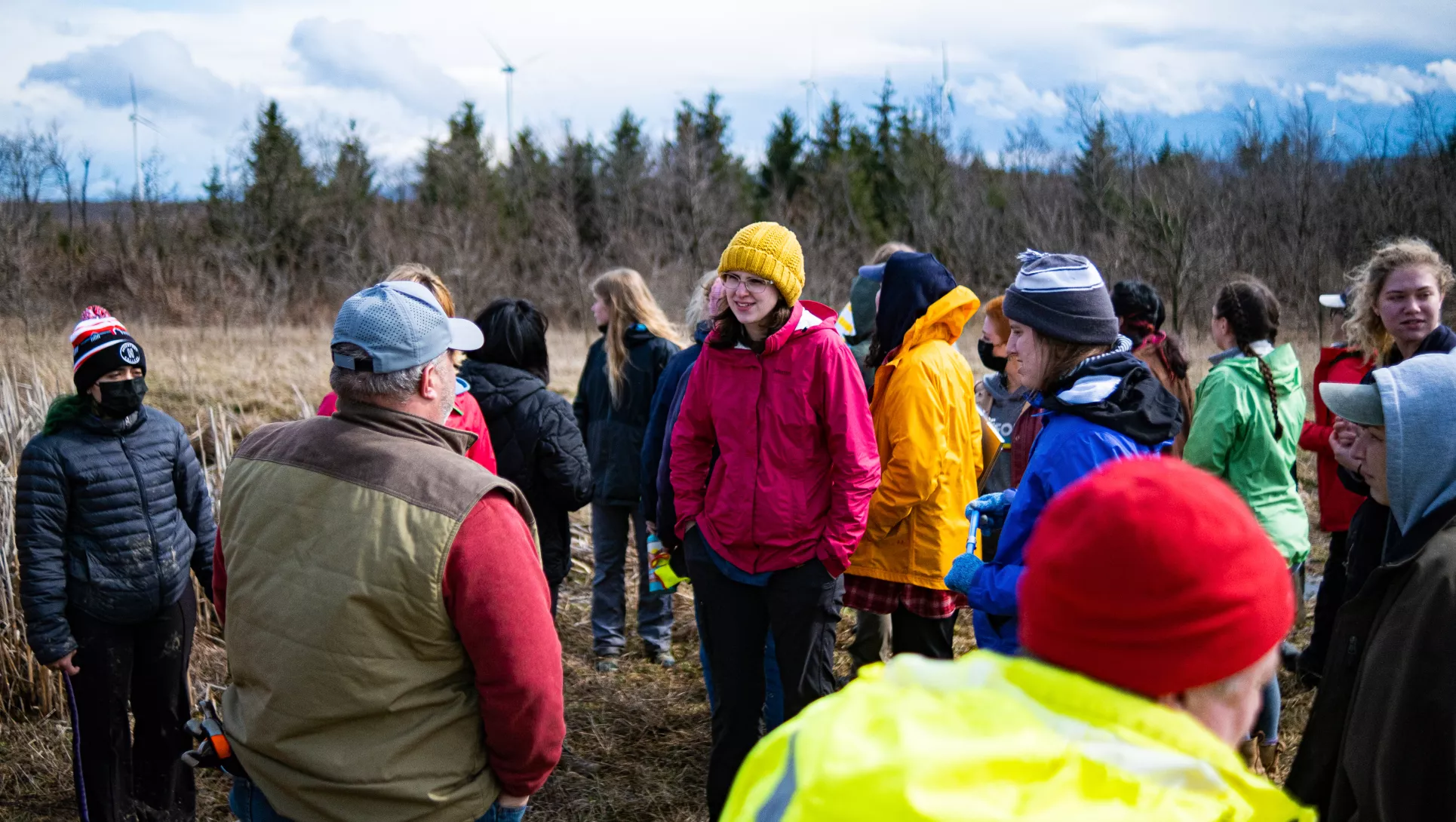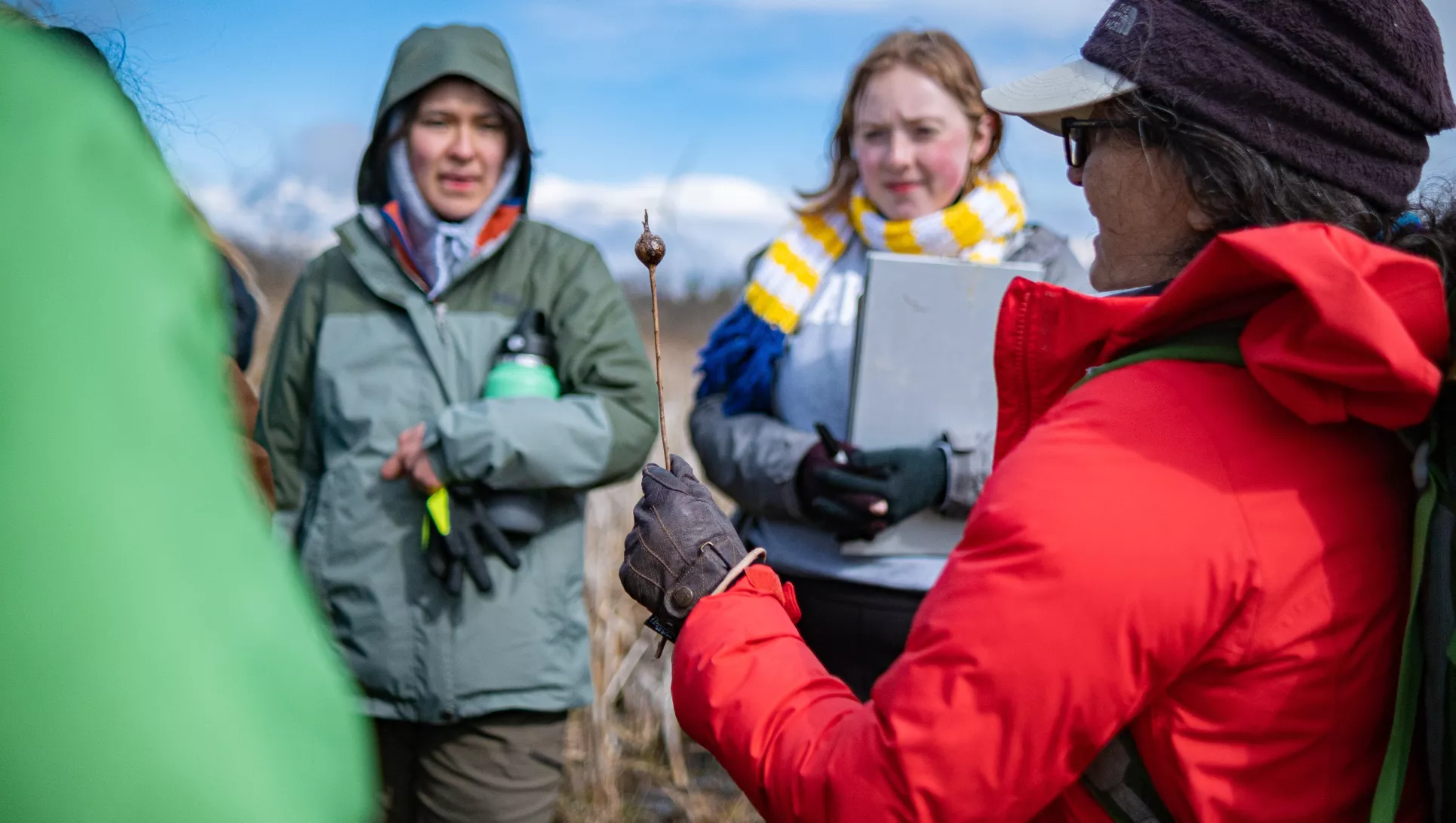New Initiative Provides Carbon Offsets for BMC and Restores Mine-Damaged Lands
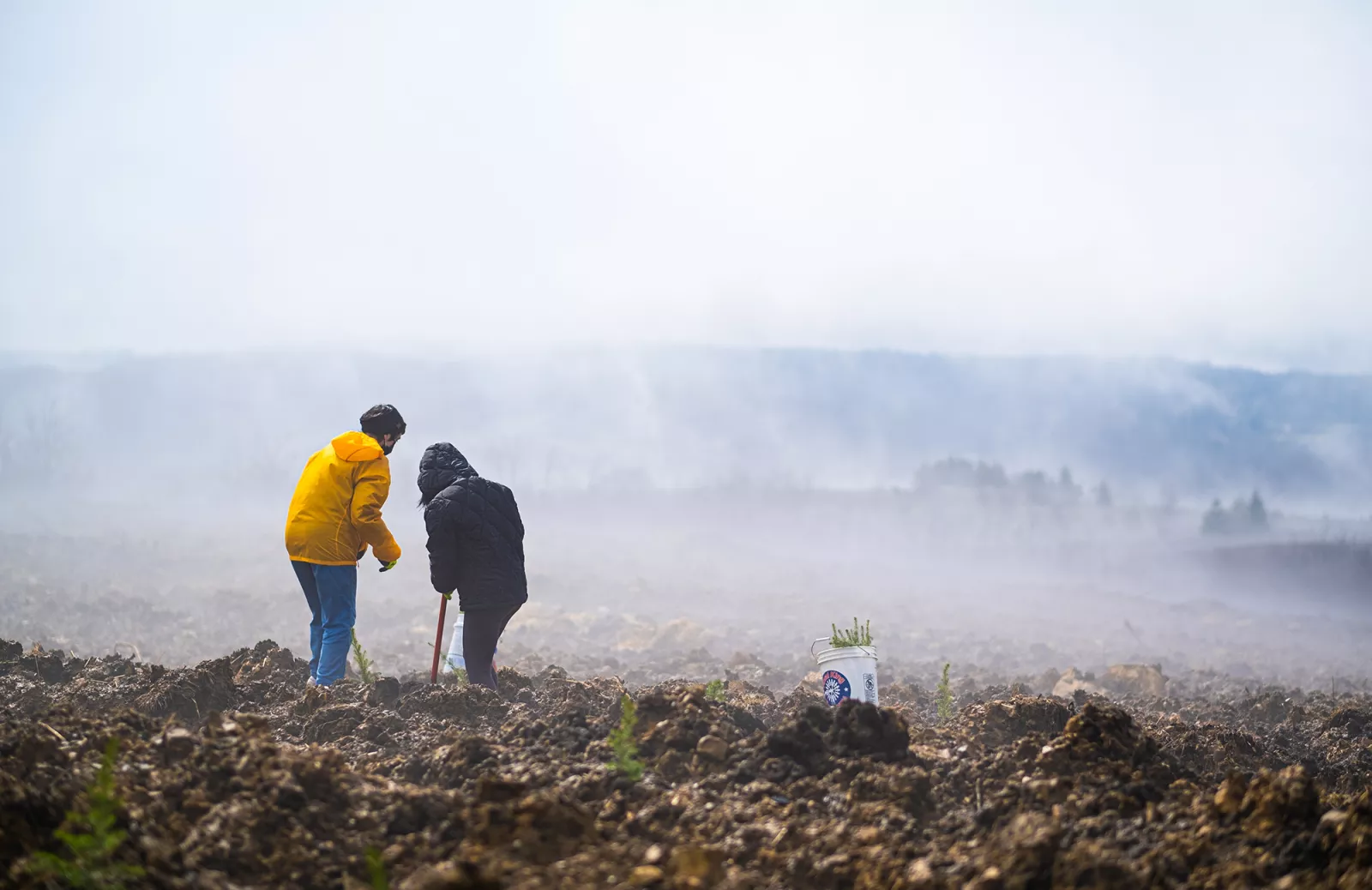
When the College announced its plans last Earth Day to be carbon neutral by 2035, a key part of the plan was a large-scale tree planting initiative as a carbon production offset action that would serve as a bridge as new technologies emerge, and a continued commitment to convert to carbon-free technologies and fuel sources into the future.
Recently, a group of students joined Associate Provost and Associate Professor of Biology Sydne Record and Facilities staff members in western Pennsylvania near the town of Altoona to plant trees in reclaimed mine lands and learn about the partnership the College has entered into to make the initiative a reality.
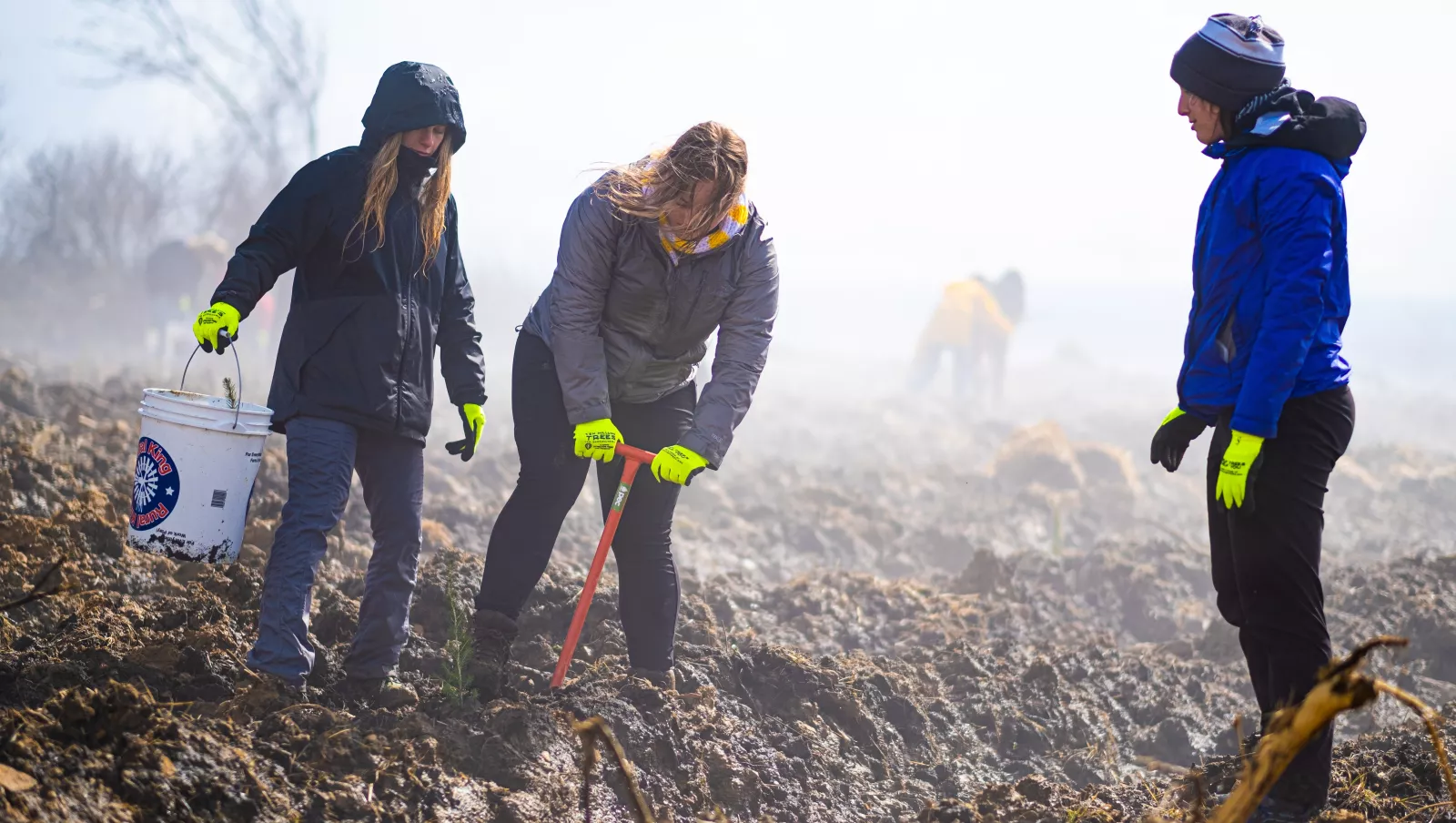
Bryn Mawr has partnered with the Pennsylvania Environmental Council, the Altoona Water Authority, and others on the project, in which roughly 400,000 trees will be planted over the next four to five years as part of the Appalachian Regional Reforestation Initiative. The College is contributing to the cost of the planting, and it is expected that approximately 100,000 trees will be planted by the end of this spring.
“We’re really excited to be an early partner in helping the Environmental Council scale up this project,” says Director of Facilities Nina Bisbee. “In addition to helping the College offset its carbon usage, this project will also have the additional benefits of serving as a research opportunity for faculty and students, and it will restore wildlife habitat and land in a watershed that supplies additional ecosystem services to the surrounding community.”
The Bryn Mawr team visited the site on a wild weather day that had everything from rain to thunder to snow and eventually beautiful sunny skies.
“The hope is that this will be the first of many educational trips for the College to give students hands-on experience with ecological restoration and to instill in them a sense of planetary stewardship with an eye toward sustainability,” says Record, who in addition to conducting research on sustainability issues, now plays a key role in the College’s sustainability efforts in her associate provost role.
The day started with the group taking a tour of the site and learning about its coal mining history.
“We saw a barren mining wasteland that looked like the illustrations on the last few pages of Dr. Seuss' The Lorax, including a stream polluted with acid drainage from the historic mine,” says Record.
After the tour, the group visited another area that was further along in the soil restoration process, where they planted trees for carbon offsets and set up a study of existing trees on the site where soils will not be restored.
Kristen Hung ’25 was among the students who took part in the trip.
“As global carbon emissions rise, carbon ‘sinks’ to sequester the carbon from these emissions are in increasing demand,” says Hung. “Our trip to Altoona was an eye-opening experience that allowed us to connect with a few people who are—quite literally—taking matters into their own hands as well as gain some hands-on experience ourselves.”
In future years, students will be able to build upon the work started by Hung and her fellow students, says Record.
“The baseline data we collected on the age and size of the trees in areas without soil restoration will enable us to compare the growth of trees with and without soil restoration over time,” explains Record. “We were lucky because the trees we measured that are on the site are some of the same species of native spruce trees that we planted, so it provides a nice study design.”
In addition to continued work with the PEC, Record, Bisbee, and the Sustainability Leadership Group plan over the next year to update the College’s sustainability plan.
As preparation for that strategic planning process, students in Record’s "Ecological Exiles and Sustainability” course and Facilities staff have been doing a sustainability inventory.
“We hope that this inventory will provide the campus with a roadmap of what has been done as we plan where we would like to go next with sustainability,” says Record. “The Altoona tree planting project is just one of many in a portfolio of projects that the campus would like to engage with. One nice thing about the Altoona project is that it can help us reach our carbon neutral goal by 2035 through offsets and in the interim we can also be reducing our emissions. If we play our cards right, then maybe we can not only be carbon neutral by 2035 but also carbon negative.”

